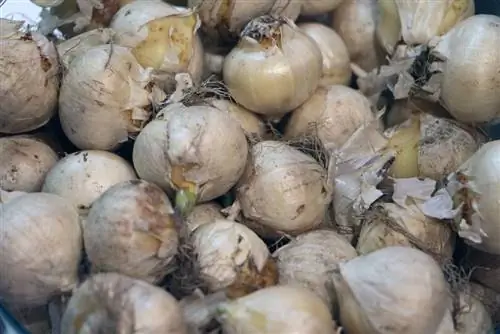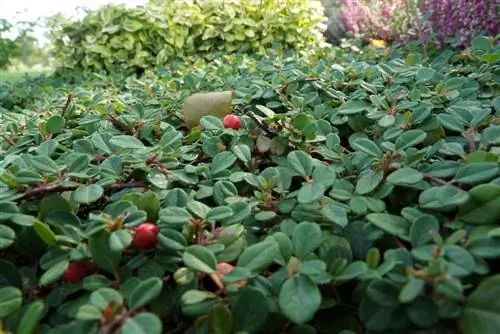- Author admin [email protected].
- Public 2023-12-17 03:39.
- Last modified 2025-06-01 06:48.
Picturesque flower beauties, such as orchid, meadow bellflower or checkerboard flower, are rare in the wild. Intensive agriculture and forestry have destroyed the habitat of numerous plant species, making their appearance in the landscape something of a sensation. Nature-loving home gardeners no longer want to stand idly by and watch the disastrous process and are planting rare flowers and flower bulbs. Here you can get to know 20 types of flowers that will transform your garden into a flowery paradise and ecological gem.
Rare flowers - list in alphabetical order
Arnica, real arnica (Arnica montana)

With its yellow starry flowers, real arnica shines in competition with the summer sun. The local medicinal plant has become rare because it is a specialist for acidic ericaceous soil. As marshlands were drained, the habitat of this pretty flower was lost. With its decorative, lush green leaf rosettes, arnica is an adornment for moist, acidic locations in the garden even when it is not in bloom.
- Flowering period: June to July
- Growth height: 30 cm
Blue ladders to heaven (Polemonium caeruleum)
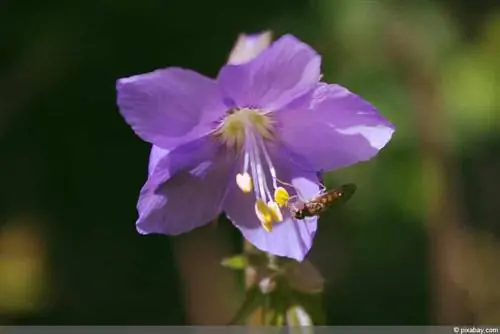
In the wild, you will look in vain for the sky-blue, upright flower shoots of this historic perennial. With a little luck, the rare Blue Sky Ladder can be spotted in protected floodplains and river valleys. If you still have a fresh, moist, nutrient-rich spot in the garden at the edge of the pond or in the middle of the wildflower meadow, the rare flower species will show what abundance of flowers it has.
- Flowering time: June and July
- Growth height: 60 to 80 cm
Christmas rose (Helleborus niger)
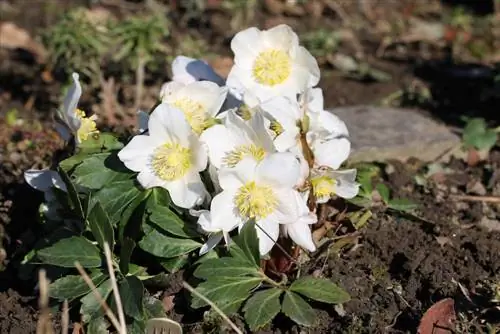
White cupped flowers amid ice and snow are the special characteristic of the Christmas rose. The secret winter queen of flower species is unfortunately rare in the wild because there is a lack of suitable locations. The noble beauty wants a sunny to semi-shady place that is characterized by fresh, moist, calcareous soil. Unfortunately, behind the innocent white of its beautiful flowers there is a poisonous side, so the Christmas rose should be placed out of the reach of children.
- Flowering period: November to March
- Growth height: 15 to 25 cm
Diptam (Dictamnus albus)
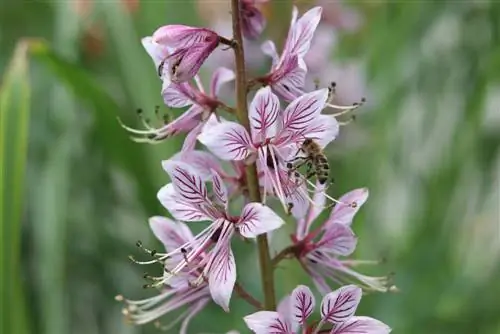
The great poet Johann Wolfgang von Goethe would read us from his grave if he heard that inconsiderate people were radically restricting the habitat of his favorite flower. The native perennial is a real feast for the eyes with elegant pinnate leaves and pink flower clusters. The rare flower has been protected since 1936 because it only thrives in sunny, warm, lime-rich and well-drained soil. Wherever the picturesque rue plant feels at home, it gains in radiance from year to year and proves to be very long-lasting.
- Flowering period: May to June
- Growth height: 80 to 100 cm
Edelweiss (Leontopodium alpinum)
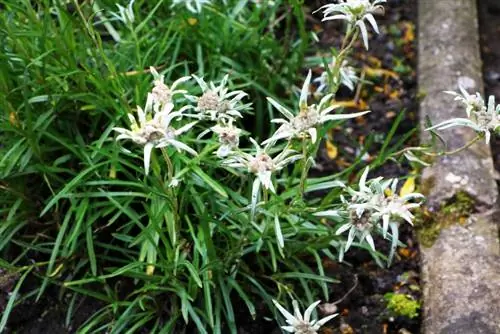
It didn't do much good for the legendary edelweiss that it was the first plant in Germany to be placed under nature protection in the middle of the 19th century. Despite all this, the star-shaped, silvery-felt flowers are still rare. To enjoy the floral landmark of the Alps in your own garden, simply integrate the rare flower into the planting plan for the sun-drenched rock garden, a sunny wall crown or rocky steppe. Ideally, you would dedicate your own Alpinum to Edelweiss, together with the equally rare flower species Alpine Auricula (Primula auricula) and Pasque Flower (Pulsatilla vulgaris)
- Flowering period: June to August
- Growth height: 10 to 15 cm
Lady's Slipper, Yellow Lady's Slipper (Cypripedium calceolus)
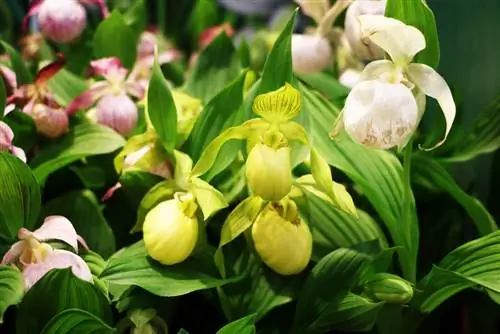
The yellow lady's slipper has already won the title “Orchid of the Year” twice, in 1996 and 2010, because no one can ignore its unique beauty. Probably the most magnificent wild orchid species is also the only lady's slipper species native to Europe. This means that the rare flower makes us particularly responsible for protecting and preserving it. Light, herb-rich bushes, calcareous loam and clay soil as well as fresh, moist soil are the elixir of life for vital growth. In these locations, Frauenschuh presents her unmistakable, shoe-shaped flowers, to which she owes her name.
- Flowering time: May and June
- Growth height: 40 to 60 cm
Gold Flax, Yellow Flax (Linum flavum)
Parallel to the destruction of species-rich poor meadows and nitrogen-poor bushes and pine forest edges, the yellow flower carpets of golden flax retreated. Today the population of these beautiful flowers has shrunk to a few hundred specimens. By planting yellow flax in your naturally managed garden, you are making a valuable contribution to preserving the sunny yellow flowers.
- Flowering period: June to August
- Growth height: 20 cm
Common Poppy (Papaver rhoeas)

Bright red, delicate cupped flowers announce from a distance that you are encountering the rare corn poppy. Before pesticides in the fields caused major species extinctions, the two-year-old summer flower was a familiar sight. In 2017, the Loki Schmidt Foundation drew attention to the threat to corn poppies by naming the plant “Flower of the Year”. A speci alty of corn poppies is that they are not afraid to transform stony wastelands and desolate embankments into a sea of red flowers.
- Flowering period: May to July
- Growth height: 50 to 60 cm
Cornflower (Centaurea cyanus)
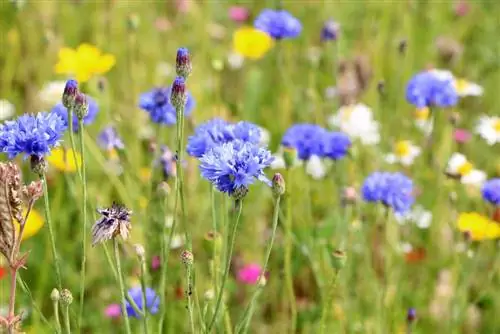
In earlier years, blue cornflowers dominated the image of extensive grain fields. Together with the bright red poppy flowers, they were the dream team of midsummer. Unfortunately, the use of pesticides put an end to the romantic ambience. As an annual summer flower, the cornflower with richly branched stems can compete with the splendor of opulent perennials if the flower is sown in groups in a sunny, nutrient-poor location.
- Flowering period: June to October (please clean out the dead flowers regularly)
- Growth height: 50 to 70 cm
Pasqueflower, pasqueflower (Pulsatilla vulgaris)

A herald of spring with a special charm is the pasque flower, whose half-open spring blossoms are reminiscent of the cowbells of the alpine pastures. After the furious flowering period, the rare flower delights with feathery seed heads, full of unique feather-tailed flies. Since the distinctive pasqueflower is very picky about the location conditions, it is threatened with extinction. This precious flower species loves lime-rich, sandy-humous soil and warm locations. Poor grassland, limestone slate and gravel terraces are their territory.
- Flowering time: March to April
- Growth height: 20 cm
Purple Orchid (Orchis purpurea)
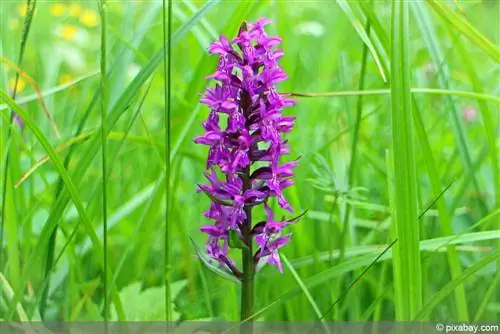
The increasing bush cover of semi-arid meadows and the disappearance of valuable forest biotopes are causing serious problems for one of Germany's most stately orchids. As a representative of all orchids, we would like to recommend the purple orchid, the orchid of the year 2013. Its magnificent flowers are made up of three upper, dark purple petals that are like a helmet above the three lower, white, purple spotted petals. A work of art from Mother Nature's hand, which is perfectly showcased on the partially shaded, dry, warm edge of the wood.
- Flowering time: May and June
- Growth height: 25 to 80 cm
Red-leaf rose, pike rose (Rosa glauca)
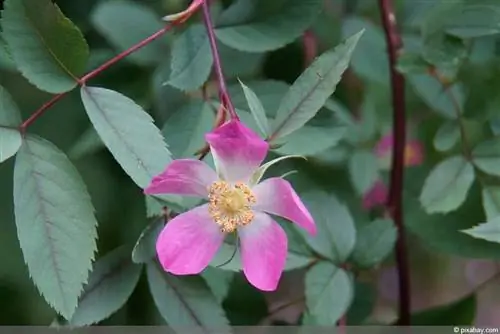
On the surface, roses are not rare types of flowers. The lavish splendor of cultivated roses in ornamental gardens and parks has little in common with the unadulterated natural beauty of the protected red-leaf rose. The wild rose has become so rare in Germany that it is listed as a highly endangered species on the Red List. By integrating the pike rose with pink flowers and shimmering blue leaves into your planting plan, you can stop the decline. The decision is rewarded with a magnificent rose bush up to 250 cm high that requires little care.
- Flowering time: June and July
- Growth height: 150 to 250 cm
Tip:
The colorful array of rare flowers not only contributes to the varied appearance of the garden. As a positive side effect, the floral rarities attract rare butterflies to their green kingdom, such as the greater fire butterfly, the ducat butterfly or the Hauhechel blue butterfly.
Milfoil, God's Grace (Centaurium erythraea)
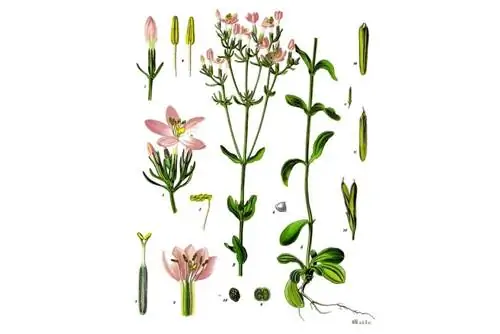
Where the lovely centaury likes it, it produces such a dense pink flower dress that the green stems are no longer visible. However, suitable locations are few and far between in the wild, so the flower has become rare. What complicates matters is the low level of competitiveness against plant neighbors. The native wildflower loves sunny to semi-shady locations with permeable, lime-poor soil and does not want to be disturbed with a rake or additionally fertilized.
- Flowering period: June to August
- Growth height: 20 to 30 cm
Troll flower, golden head (Trollius europaeus)

The extensive use of wet meadows and their drainage has become the downfall of the only globe flower species in Europe. The Flower of the Year 1995 has been under conservation protection since 2001 because its bright yellow flower balls have become increasingly rare. Up to 15 sunny yellow petals gather in a tight ball so that only small pollinators can get inside to the tempting nectar. A spectacle for the whole family are the attempts of fat bumblebees and bees to squeeze through the flowers in order to enjoy the delicious nectar.
- Flowering period: May to June (regular cleaning extends the flowering period)
- Growth height: 20 to 60 cm
Rare flower bulbs in alphabetical order
Squill, star hyacinth (Scilla bifolia)

The rich supply of nectar from the sky-blue flowers provides bees and butterflies with their first source of food in spring. In a sunny, warm location, the squill develops a dense carpet of flowers in the natural garden within a few years. Although the bulb flower is well hardy, the population is steadily declining, so it is protected today. Give the rare flower species a chance by planting the bulbs in large groups in the loose, humus-rich garden soil in autumn.
- Flowering time: March
- Growth height: 10 cm
Spring light flower, candlestick flower (Colchicum bulbocodium)
With the spring light flower, a very special treasure finds its way into your garden. The flower species is so rare that great efforts are made to protect it when one of its few natural habitats is discovered. Its distinguishing feature is its six-petaled, purple to pink flowers, which shine close to the ground. As the snow melts, 3 or more crocus-like flowers sprout from each flower bulb and last for up to 3 weeks. The spring light flower cannot deny its botanical relationship to autumn crocus, including the poisonous ingredients.
- Flowering period: February to April
- Growth height: 5 to 15 cm
Checkerboard Flower (Fritillaria meleagris)

The destruction of swampy meadows and riparian regions has led to the almost complete withdrawal of checkerboard flowers from the landscape. The flowers, with the distinctive combination of bell-shaped flowers, color and pattern, would be a major loss to biodiversity. If you plant small groups of flower bulbs in the fresh, moist, nutrient-rich soil in autumn, your garden will be enriched with a host of lovely signs of spring. The checkerboard flower is also one of the few bulb flowers that like to thrive in the marshy banks of ponds and streams.
- Flowering time: April and May
- Growth height: 30 cm
Swamp Iris, Water Iris (Iris pseudacorus)
With bright yellow iris flowers, the swamp iris makes shallow water areas glow. The tubers can be up to a depth of 40 cm without permanent flooding causing them any harm. The early warning system in nature conservation was recently triggered for the yellow swamp beauty because it is gradually retreating. If the community of hobby gardeners resists this incipient process and plants the water iris, it will be spared the fate of being included in the Red List of extinct flower species.
- Flowering period: May to July
- Growth height: 60 to 100 cm
Turk's Bund Lily (Lilium martagon)
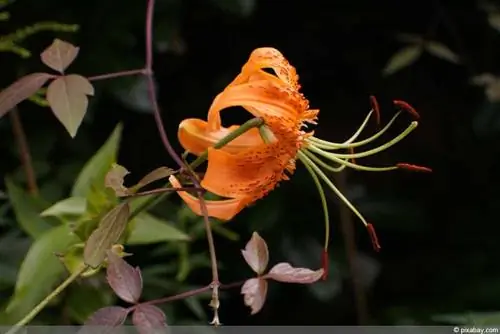
Are you looking for a rare flower that stands out colorfully against the dark backdrop of trees? Then shortlist the Turk's Bund lily with its striking flowers and seductive scent. Their preference for cool, partially shaded locations is the downfall of the stately lily plant in the wild. As the climate warms, the magnificent flower is retreating to the cool mountains and is increasingly becoming a rarity there too.
- Flowering time: May and June
- Growth height: 100 to 120 cm
White forest hyacinth, two-leaved forest hyacinth (Platanthera bifolia)
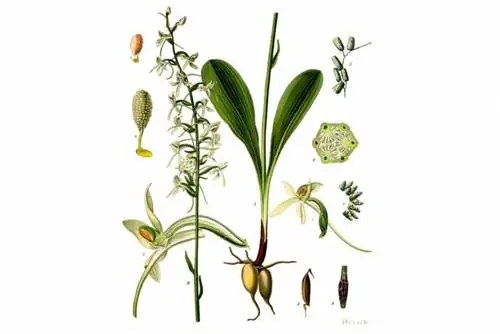
One of the most beautiful wild orchids gracefully completes the series of rare flowers and flower bulbs. The white forest hyacinth impresses with flower spikes containing up to 40 flowers. A typical feature is a long thorn, at the transparent end of which promising nectar can be seen with the naked eye. As a result of over-fertilization, bush encroachment and reforestation, the bulb flower has already disappeared from the lowlands and has retreated to higher altitudes. To preserve the orchid of the year 2011, a light, protected location in normal, humus-rich garden soil is sufficient, preferably under deciduous trees or in poor grass.
- Flowering period: June to August
- Growth height: 20 to 50 cm




